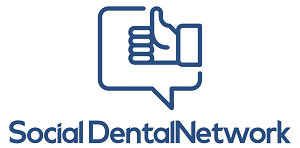According to The American Academy of Dental Sleep Medicine (AADSM), motor vehicle accidents due to “drowsy driving” account for $48 billion in medical costs each year. Sleepiness in today’s workplace causes another $150 billion in lost productivity and mistakes.
A 2006 report released by the Institute of Medicine estimated 50 to 70 million Americans suffer from chronic sleep disorders.
That was about 5 years ago, do you think that number increased or decreased?
The American Academy of Dental Sleep Medicine established “Dentists Against Drowsy Driving” to raise awareness among healthcare communities and the public about the dangers of untreated obstructive sleep apnea (OSA).
As stated by the AADSM, obstructive sleep apnea, like snoring, is a sleep-related breathing disorder. Snoring occurs when the airway is partially constricted. The snoring sound is a result of a collapsed airway. The reduced size of the opening causes the tissues to vibrate, producing the sound.
Obstructive sleep apnea occurs when the airway partially or completely collapses. This can happen hundreds of times a night, reducing a person’s blood-oxygen levels. When a collapse occurs, the brain wakes the person up to breathe, but they may not even know it. This fragmented sleep pattern can lead to daytime sleepiness – and drowsy driving.
Drowsy driving is just as dangerous as drunk driving. A new study published by the AAA Foundation for Traffic Safety credits drowsy driving with one in six deadly crashes.
“When you are behind the wheel of a car, being sleepy is very dangerous. Sleepiness decreases awareness, slows reaction time, and impairs judgment, just like drugs or alcohol, contributing to the possibility of a crash,” said AAA Foundation President and CEO Peter Kissinger.
But can snoring really be a sign of something more serious?
It can be.
Snoring is a common symptom of sleep apnea. But not everyone who snores has sleep apnea. According to the AASM, habitual snoring affects an estimated 24 percent of adult women and 40 percent of adult men. Approximately one-half of people who snore loudly have sleep apnea. OSA patients often make choking or gasping sounds when they wake up to breathe. This noise can help spouses recognize a breathing problem.
Anyone can have a sleep related breathing disorder. Risk factors include obesity, large neck sizes, alcohol, tobacco smoke, and Down Syndrome. Risk increases with age and weight. OSA is more common in men.
Dangers of Undiagnosed Sleep Disorders
Sleep apnea can cause hypertension, stroke, heart attack, and sudden death during sleep. Obstructive sleep apnea (OSA) increases one’s risk for diabetes, obesity, and depression. It can also cause memory problems, morning headaches, irritability, decreased libido, and impaired concentration. And while the American Academy of Sleep Medicine estimates that 18 million Americans have OSA.
Unfortunately, an alarming 80 to 90 percent of these people are undiagnosed and untreated.
We can all take some preventative measures to limit sleep disorders, and we can all communicate more with our doctors and dentists to diagnose any possible symptoms of sleep apnea before things progress to unhealthy or dangerous levels.
If you or someone you love snores or experiences any level of sleep disorder, don’t continue to ignore it. Go see your doctor, schedule a diagnostic test with a sleep specialist, and talk to your dentist about readily available and easily affordable sleep disorder solutions.
Don’t Drive Drowsy!
Pass it on.

